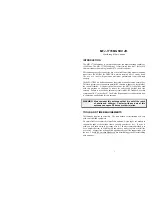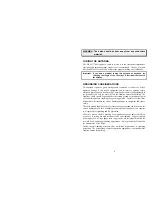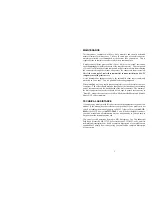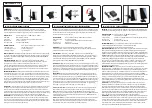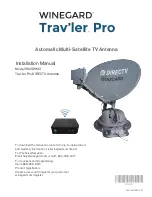
4
WARNING:
The balun should be kept away from any conductive
material!
TUNING THE ANTENNA
The MFJ-17778M requires a tuner to match it to the transmitter impedance.
Operating this antenna without a tuner is not recommended. The use of a tuner
like the MFJ-962D or MFJ-986 will provide proper matching on all HF bands.
Important: If you have a problem tuning this antenna on any band, try
changing the length of the coax (by 3-6 feet) from the tuner to
the antenna.
GROUNDING CONSIDERATIONS
This antenna requires a good earth ground connection to reduce the risk of
lightning damage to the station equipment and to improve operator safety.
Adequate protection can be obtained by burying the coaxial feedline
directly
in
the ground for 20 feet (or more) before the feedline enters the building. The
feedline's shield should be grounded to the station ground at the entrance point
of the building before reaching the operating position. Failure to follow these
precautions will increase the risk of lightning damage to equipment and reduce
safety.
The earth ground should consist of at least one copper ground rod driven into the
earth a minimum of 6 feet. Multiple ground rods and buried wires are superior
to a single rod for lightning and RF protection.
Never use woven flexible braiding for ground connections unless
absolutely
necessary
. Braiding has high resistance to RF and lightning. Copper flashing,
wide copper foil, or large gauge solid copper wires are the proper materials for
use in RF and lightning grounding applications. Never ground the feedline on
the antenna side of the balun.
In-line coaxial lightning arrestors offer a minimal improvement in lightning
protection. The best method of protecting station equipment is to disconnect the
feedline outside the building.

